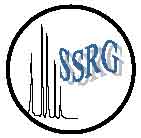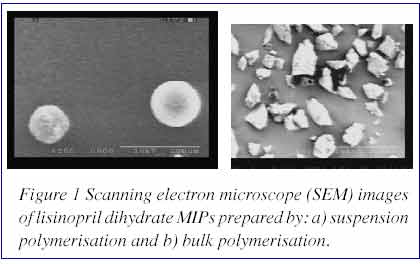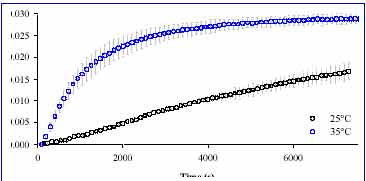| 2006 |

|
YEAR BOOK |
Waterford Institute of Technology
|
Separation Science Research Group (SSRG) Waterford Institute of Technology
|

Dr. Peter McLoughlin, Dr. Patrick Duggan, Dr. Helen Hughes, Dr. Joe Power, Dr. Sheila Donegan, Dr. Catherine O�Reilly, Dr. Orla O�Donovan, Dr. Miche�l O�Riordain, Dr. Eleanor Owens, Dr. June Frisby, Ms. Sandra Murphy, Mr. John Doran, Mr. Wayne Cummins, Mr Kevin Flavin, Ms. Niamh Holland, Ms. Rachel Walsh, Mr. Jason Mullowney, Mr. Richard Ryan and Ms. Carol Power.
The establishment of the Separation Science Research Group in 2001 was facilitated by funding from the Technological Sector Research (2000-2006) Strand III initiative. The success of the SSRG can be measured by the number of follow-on projects and the amount of funding attracted since its initial establishment.
Separation science involves the use of techniques to facilitate the separation, purification and analysis of complex mixtures of chemical and biological compounds. These separation techniques are of fundamental importance to a wide range of industries including the pharmaceutical, food and biotechnology sectors.
Current research topics at the SSRG include:
The development of microemulsions for the analysis of pharmaceutical analytes by microemulsion electrokinetic chromatography (MEEKC) and microemulsion liquid chromatography (MELC)
The advantage of employing microemulsions for MEEKC and MELC is that both water-soluble and water-insoluble analytes can be readily solubilised due to the nature of the microemulsion. This is especially useful when analysing pharmaceutical products such as creams, ointments or suppositories, which can often require extraction steps prior to analysis. Pharmaceutical formulations can be solubilised in the microemulsion and injected directly onto the instrument without any extraction and with minimum sample preparation. MEEKC also allows the separation of both charged and neutral analytes due to the differences in partition coefficients of analytes between the two phases of the microemulsion (Altria et al., 2004). Absorbance
Molecular imprinting of drugs used to treat heart disease
Due to increasing pressure from regulatory authorities such as the FDA, the pharmaceutical industry requires chemists to search for more selective methods for the evaluation of active pharmaceutical ingredients. Current research funded by Enterprise Ireland and Merck, Sharpe and Dohme (Ireland) Ltd, shows huge potential for developing selective separation media for pharmaceutical actives such as lisinopril dihydrate, an optically active compound used to treat hypertension and heart failure (Olwill et al., Submitted).

Oral administration is the oldest and most common route of drug delivery. It�s desirable to develop delivery systems capable of controlled drug delivery in order to maintain optimum therapeutic drug concentration in the blood. Controlled drug delivery reduces gastrointestinal side effects and increases patient compliance. Polymers beads molecularly imprinted with pharmaceutical actives may potentially be used as controlled drug delivery systems. Figure 1 illustrates how different polymerisation techniques greatly affect the physical appearance of the MIP.
Investigation into the Use of Sol-gel molecularly imprinted sensors
Currently the group is investigating the use of organically modified sol-gels as selective infrared sensors (Flavin et al., 2006a, Flavin et al., 2006b, Flavin et al., In Press). The ability to tailor their physical properties is a significant advantage over conventionally used polymers. This combined with their potential for molecular imprinting, demonstrates the potential for the production of a sol-gel based selective sensor. Figure 2 shows the diffusion of a pesticide into a sol-gel film at 2 different temperatures.

This project assesses the various characteristics of the template structure critical to the imprinting process. Initially, template molecules were imprinted in both acrylic and sol-gel polymers allowing both imprinted systems to be compared for specificity and selectivity (Cummins et al., 2005). In a second study a series of structurally related nitrogen heterocyclic templates were imprinted in acrylic media and the factors critical to selective recognition were assessed by a crossselectivity study (Cummins et al., In Press.). Current work focuses on further characterisation of imprinted media by thermal desorption analysis. This novel means of characterisation probes the performance of the polymers in dry phase applications, i.e. in the absence of a swelling solvent.

One on-going area of research within the SSRG is the synthesis of novel selective extraction media for N-heterocycles. N-heterocycles have great precedence in the pharmaceutical industry as they are the building blocks for many pharmaceutical and active drug compounds. A selective extraction system for N-heterocycles is currently being developed showing excellent film characteristics which may potentially be developed as a sensing or drug delivery system.
Synthesis of uniform MIP beads
This research project (recently funded by the European Union�s INTERREG IIIA Programme) involves the development of a controlled polymerization method for the synthesis of uniform spherical molecularly imprinted polymer beads. Columns and cartridges packed with uniform spherical beads show better flow characteristics when used in liquid chromatography, solidphase extraction and other flow through applications. Such media will be used for the selective extraction and purification of a range of pharmaceutical actives and environmental templates.
Analysis of substrate range and catalytic activity of novel nitrile metabolising enzymes
This research project involves the analysis of substrate range and catalytic activity of novel nitrile metabolising enzymes, derived from the parent strains, using a variety of techniques including gas chromatography (GC), and high performance liquid chromatography (HPLC) (Doran et al., 2005). SFI funding was obtained to allow collaboration between WIT and Prof. Mei- Xiang Wang�s group at the Chinese National Academy of Science, Institute of Chemistry in Beijing.

� Dr Chris Allender, Cardiff University
� Prof. Mei-Xiang Wang, Chinese National Academy of Science, Institute of Chemistry in Beijing
� Dr Kevin Altria, GlaxoWellcome, UK
� Dr Fiona Regan, Dublin City University.
� Eileen Counihan, Merck Sharpe and Dohme Ltd.
� Tom Brennan, EirGen Pharma Ltd.
� Tyndall Institute, Cork.
For more information please contact
Dr Peter McLoughlin.
Tel: 00353 (0)51 302056
E-mail [email protected] , Web SeparationScienceResearchGroup/